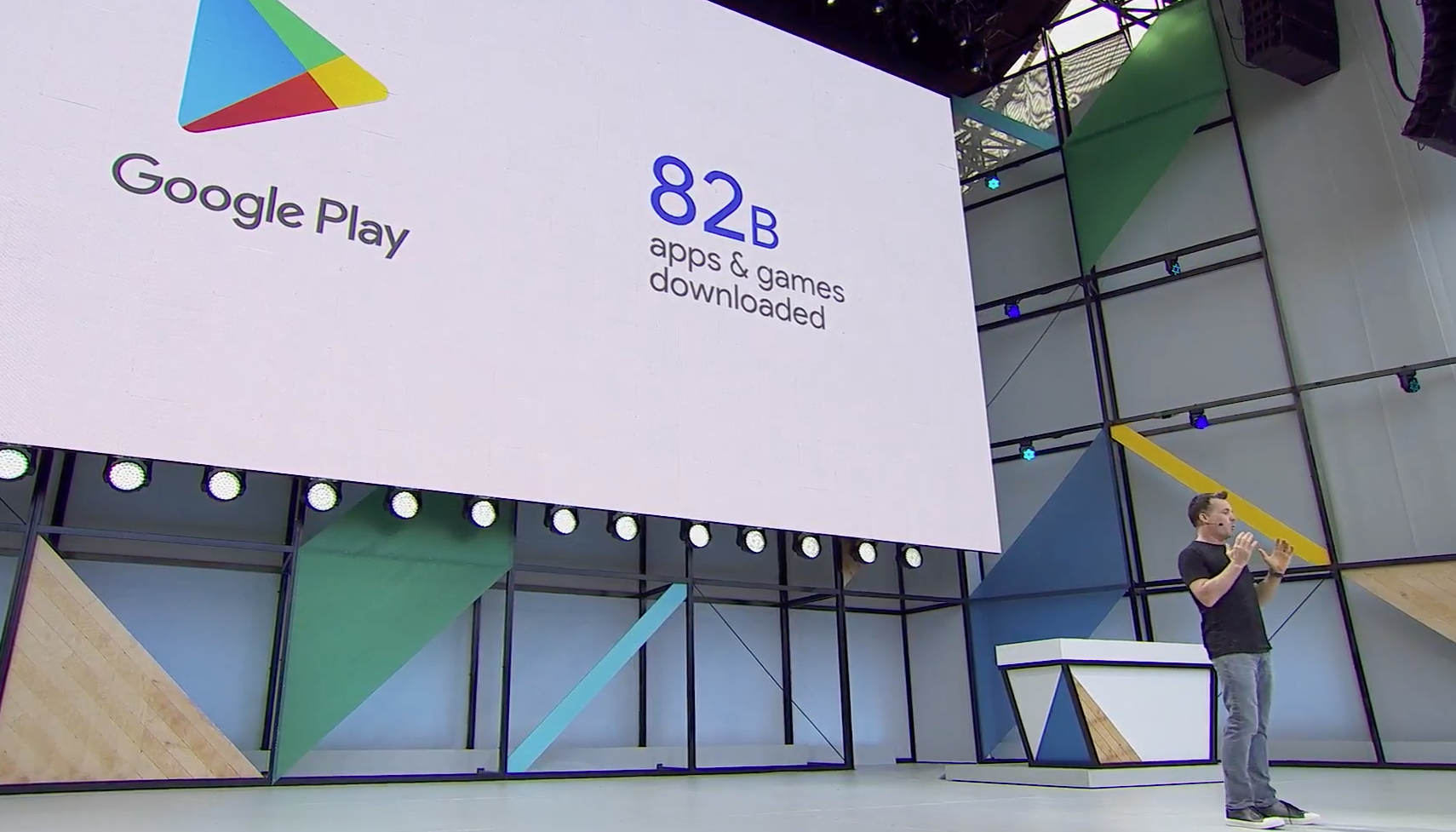testsetset
At its I/O 2017 developer conference today, Google rolled out new Google Play Console features for developers. The company emphasized it wants to help them improve app performance, manage releases, reach a global audience, and growth their business.
Google Play has over 1 billion monthly active users, which the company argues makes it “the world’s largest app distribution platform.” Last year, Google Play users installed apps 82 billion times, the company revealed today. That number is up from 65 billion in 2015 (a 26 percent increase) and 50 billion in 2014. Google also shared that the number of developers with more than 1 million monthly installs grew by 35 percent year over year, and the number of buyers on Google Play grew by almost 30 percent in the last year. Stephanie Cuthbertson, Google product manager for Android, shared the new numbers onstage today.

Above: Dave Burke, vice president of engineering for Android, announced that 82 billion apps and games had been downloaded from Google Play, while onstage at Google I/O 2017.
The Google Play Developer Console first arrived in October 2012 (the company is dropping “Developer” from the name today to denote that it’s used by more than just developers nowadays). Google has been improving it ever since; here are the latest features:
- Statistics: The statistics page now offers quicker, more flexible access to important data about your business. You can compare two different metrics and break them down by a dimension, select any date range you want, view a breakdown of your data, and even access hourly stats.
- Android vitals: Fix bad behaviors, improve your app experience, and increase your star rating. View aggregated, anonymized device data from people who have opted in their devices to understand stability (crash rates and App Not Responding rates), battery usage (stuck wake locks and excessive wakeups), and render time (slow rendering and frozen UI frames). The ANRs and crashes page has also been updated with larger crash coverage and a higher volume of data.
- Release dashboard: Track a release as it happens by monitoring important metrics. You can be confident that everything is going as planned or you can quickly halt your rollout if anything looks out of the ordinary.
- Android Instant Apps: Iterate quickly with a development track, gather feedback from trusted testers on a pre-release track, and release to production.
- Device catalog: Search and filter across rich device data for thousands of devices certified by Google to see your installs, rating, and revenue contributed by device type. You can now also set device exclusion rules by performance indicators like RAM and system on chip. More granular controls means you can exclude fewer devices and offer the best experience on all devices your app supports.
- App signing: Securely transfer your key to Google to manage on your behalf. Opt-in for upcoming assistive services like app optimizations for APK size so the Play Store can deliver versions of your APK optimized for the screen density and native architecture of each target device type.
- Pre-launch report: Firebase Test Lab shows you the results of testing your alpha or beta app on real devices in the lab so you can spot and fix issues before you launch. The report features more device test coverage including Android O devices, and new controls, like being able to provide credentials so your app can be tested behind a login.
- Retained installer data: The acquisition report now includes retained installer data to show which channels and geographies drive valuable users who keep your app installed over periods of up-to 30 days.
- Financial reports: With the subscriptions dashboard, you can understand and analyze total subscribers, revenue, retention, and churn across multiple dimensions.
- Reviews analysis: Covers more languages to help you gather insights from reviews to improve your app. Updated ratings summarizes how users have updated their ratings and reviews, including the effect any replies you made had on those updates. Reviews history shows you the history of your conversation with a user. Finally, you can now also report reviews which do not meet the posting policy guidelines.
Speaking of apps, the Playbook app lets you set your objectives and provides a tailored list of the latest articles and videos from Google experts and across the Web. There’s a new beta version for those interested in helping Google improve Playbook.


